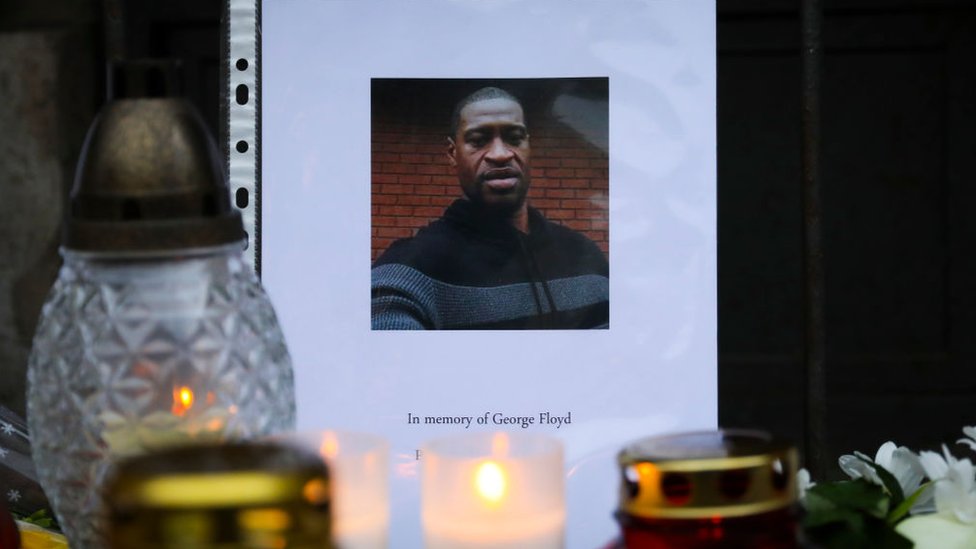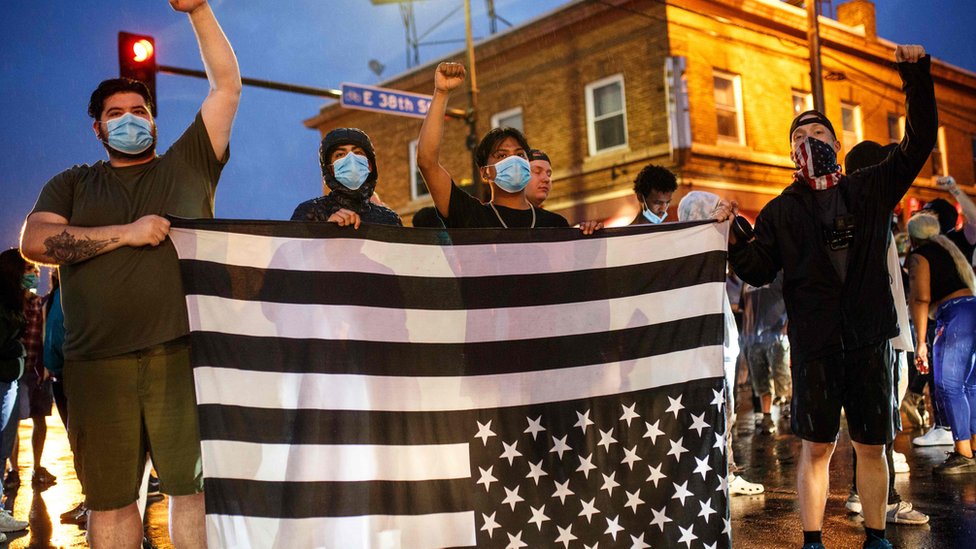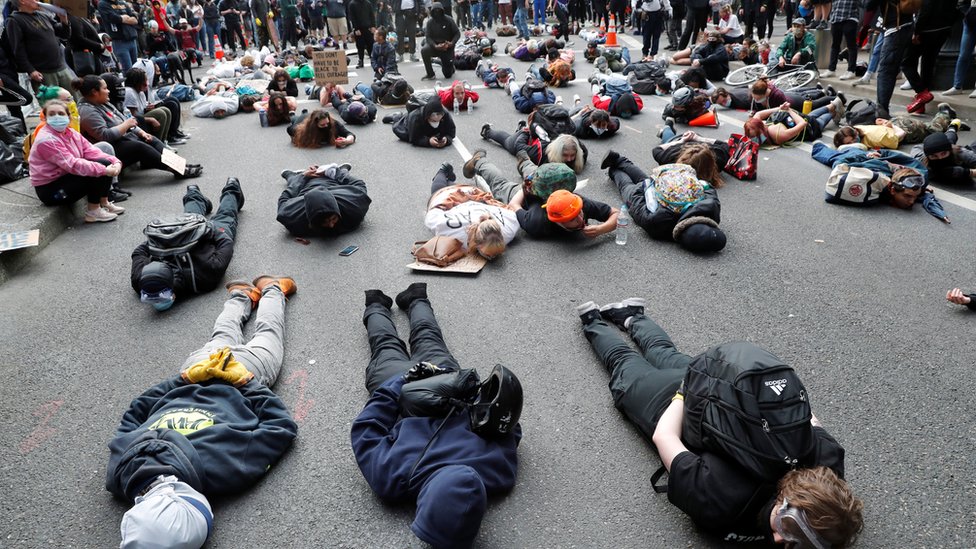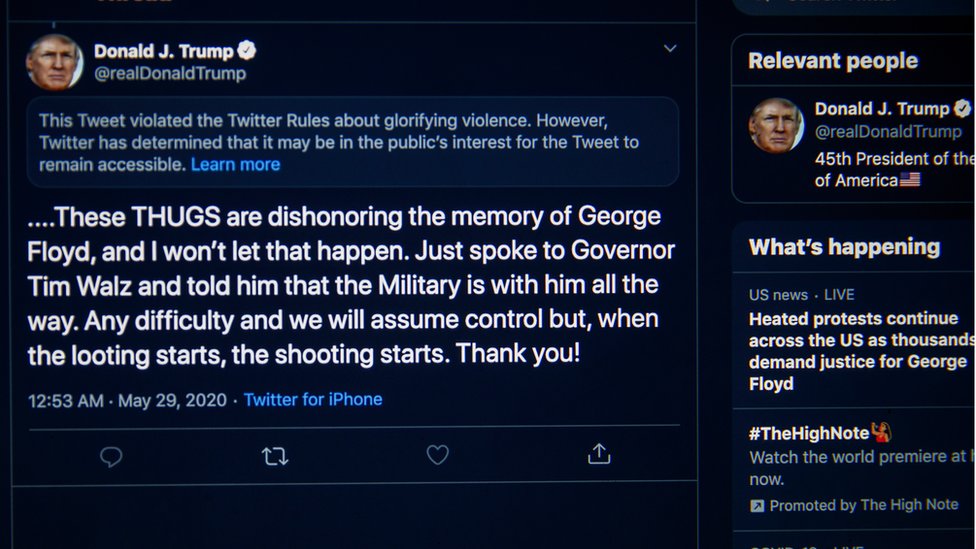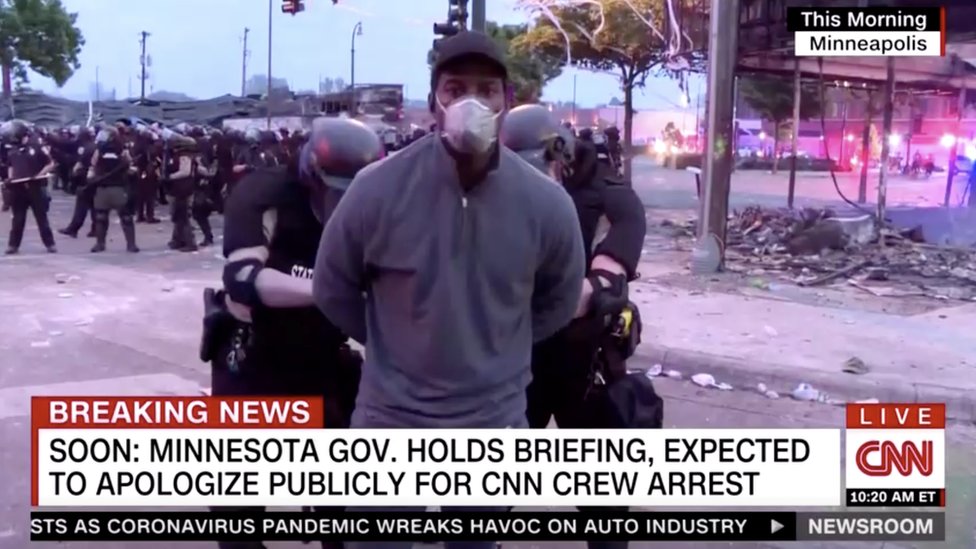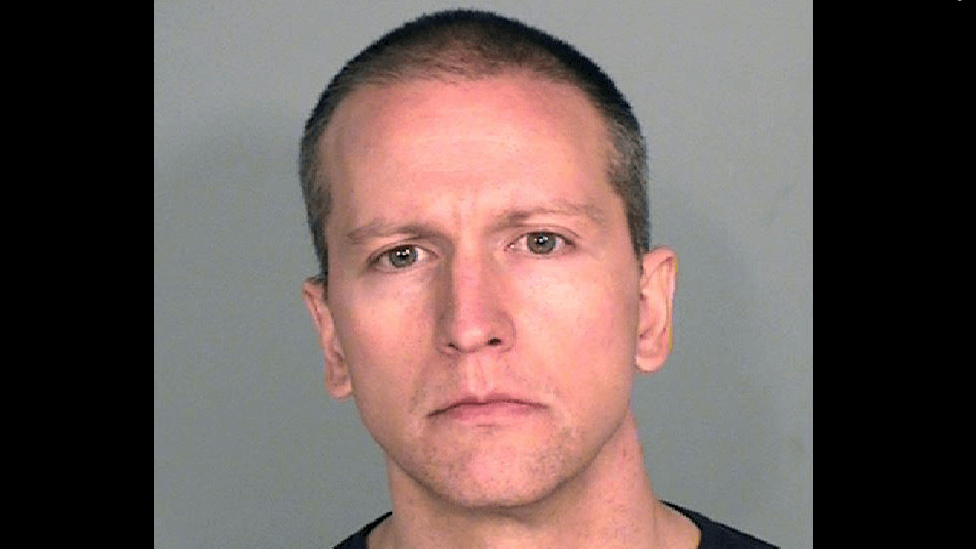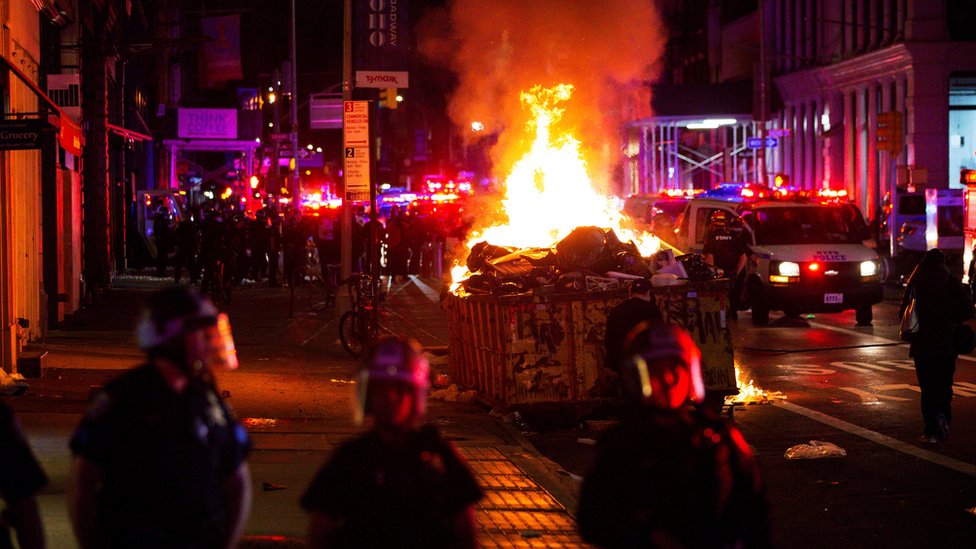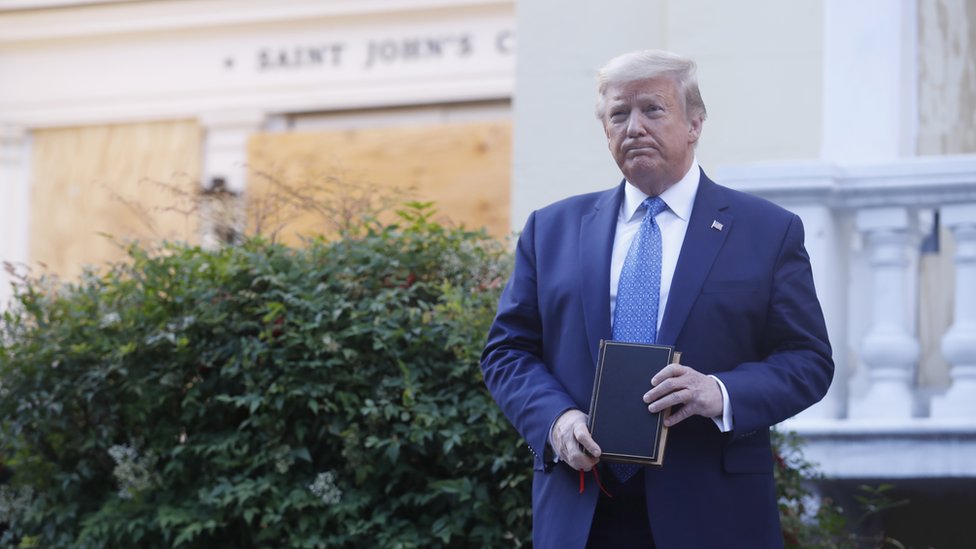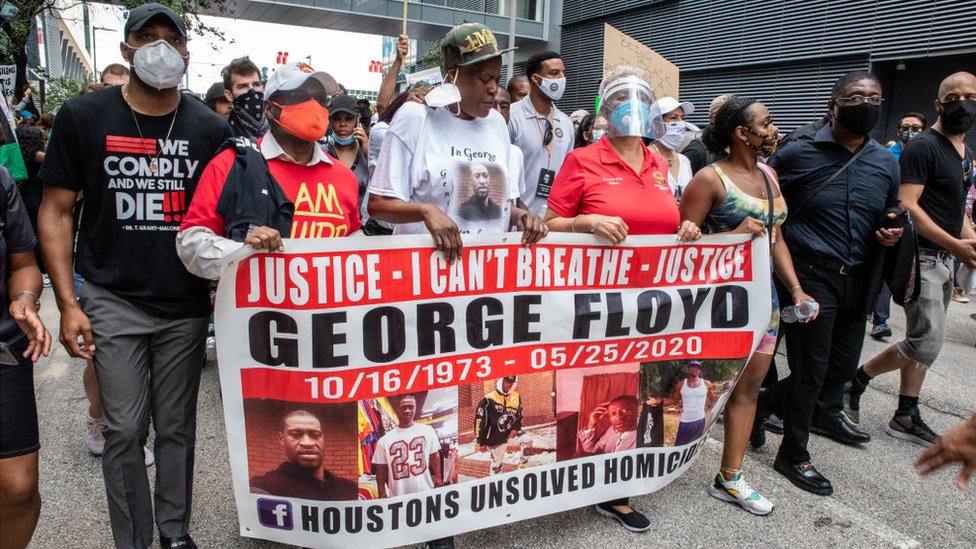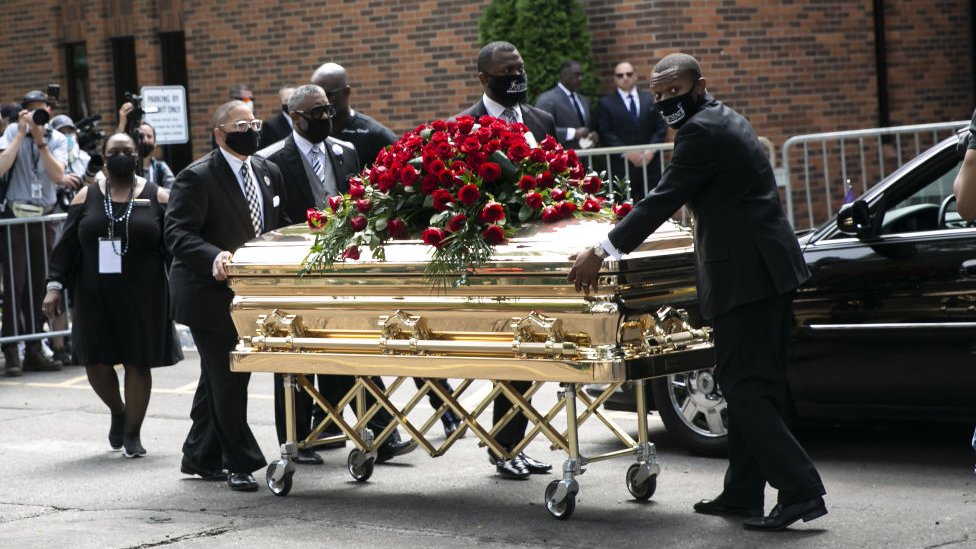This website uses cookies so that we can provide you with the best user experience possible. Cookie information is stored in your browser and performs functions such as recognising you when you return to our website and helping our team to understand which sections of the website you find most interesting and useful.
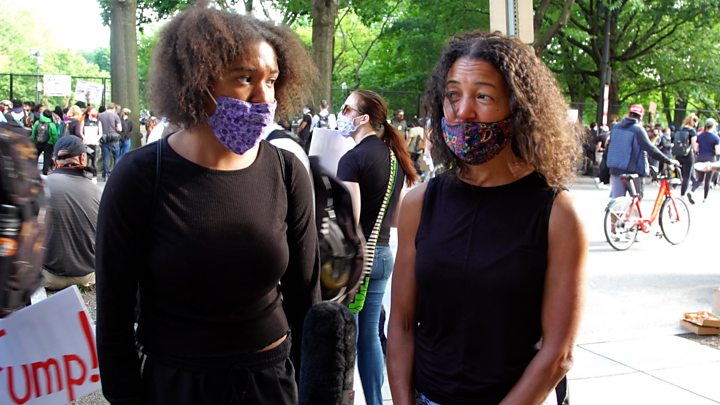
Media playback is unsupported on your device
Huge peaceful rallies are taking place across the US against racism and police brutality on the 12th day of protests sparked by George Floyd's death.
Tens of thousands of people have marched in Washington DC in the capital's largest demonstration so far.
Security forces blocked any approach to the White House. Crowds also protested in New York, Chicago and San Francisco.
Meanwhile, people paid their respects to Mr Floyd in North Carolina, where he was born, before a memorial service.
Mr Floyd, an unarmed black man, died in police custody in Minneapolis on 25 May. Video showed a white police officer, Derek Chauvin, kneeling on Mr Floyd's neck for almost nine minutes while he is pinned to the floor.
Mr Chauvin has been dismissed and charged with murder. Three other officers who were on the scene have also been sacked and charged with aiding and abetting.
Large anti-racism protests also took place in a number of other countries. In the UK, Parliament Square in central London was filled with people despite calls by the government to avoid mass gatherings for fear of spreading the coronavirus.
In Australia, there were major protests in the cities of Sydney, Melbourne and Brisbane that focused on the treatment of indigenous Australians. There were also demonstrations in France, Germany and Spain.
What is happening in the US?
In Washington DC, protesters - many of them carrying placards saying "Black Lives Matter" - gathered peacefully near the Capitol, the Lincoln Memorial and outside Lafayette Park, next to the White House, at the newly renamed Black Lives Matter Plaza.
Mayor Muriel Bowser welcomed people, saying the crowds had sent a message to President Donald Trump. On Monday, federal law enforcement officers fired tear gas to clear a protest in the area ahead of a visit to a church by the president.
"If he can take over Washington DC, he can come for any state, and none of us will be safe," she said. "Our soldiers should not be treated that way, they should not be asked to move on American citizens."
Ms Bowser has requested the withdrawal of all federal law enforcement officers and National Guard troops from the city, saying their presence is "unnecessary".
A 35-year-old protester, Eric Wood, told the BBC: "I'm here because I really couldn't afford not to be here. Racism has long been a part of the US."
Crystal Ballinger, 46, said she felt hopeful about the movement this time. "I feel something different about this protest... I'm hopeful that the message of solidarity and equality is getting out."
In New York, crowds crossed the Brooklyn Bridge while in San Francisco demonstrators briefly shut the Golden Gate Bridge. There were protests also in Atlanta and Philadelphia, where crowds chanted "We need justice, we need love".
'We're just getting started'
By Helier Cheung, BBC News, Washington
The crowd was diverse - with people of different ethnicities, and families with children - and there was an upbeat, if determined, mood. Music was being played and food, water and hand sanitiser handed out, as protesters chant "George Floyd", "Breonna Taylor" - who also died in police custody, in March - and "No justice, no peace".
The protest's movements appeared quite spontaneous. At one point, demonstrators did an impromptu march through the streets, walking down Pennsylvania Avenue before looping back towards the White House. At another, the entire street of demonstrators dropped on one knee at the same time, in a mark of solidarity.
Sisters Sarina Lecroy, 20, and Grace, 16, said they were protesting for the first time, and that they believed the extent of the public outrage and the nationwide nature of these protests could lead to police reforms. "We're just getting started this time, but it [the movement] does feel much more collective than in the past," said Sarina.
Many placards also reflected the growing debate about how white people should help the cause. One placard held by a demonstrator read: "I may never understand, but I will stand with you."
What do protesters want?
On social media and on the streets, those in support of the movement have called on elected officials to address longstanding systemic racism and inequalities, from police brutality to mass incarceration to healthcare.
Black Americans are jailed at five times the rate of white Americans and sentenced for drug offences six times more, often despite equal rates of drug use, according to the National Association for the Advancement of Colored People (NAACP).
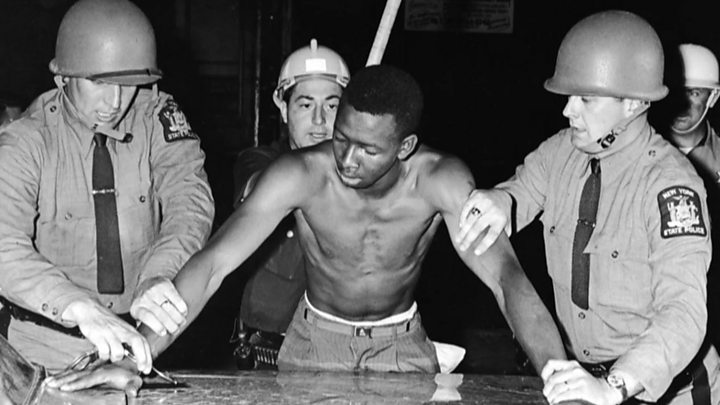
Media playback is unsupported on your device
Black mothers die in childbirth at over twice the rate of white mothers, according to national health data. Decades of government-sanctioned segregation have also seen inequalities across school systems, housing and other public resources.
A 2019 Pew Research Center study found more than eight-in-10 black adults say the legacy of slavery still affects black Americans' position today. Half say it is unlikely America will ever see true racial equality.
More on George Floyd's death
What's happening elsewhere in the US?
Hundreds of people paid their respects to Mr Floyd in Raeford, North Carolina, laying flowers at a public viewing of his body in a church near where he was born.
A private memorial service was then held for members of his family. Governor Roy Cooper ordered that flags be flown at half-mast from sunrise to sunset on Saturday in Mr Floyd's honour.
In the city of Buffalo, New York, two police officers were charged with second-degree assault after they were filmed shoving a 75-year-old protester, who remains in hospital in a serious but stable condition. The officers pleaded not guilty and were released without bail.
On Friday, the Minneapolis City Council and the Minnesota Department of Human Rights agreed to ban police neck restraints and chokeholds.
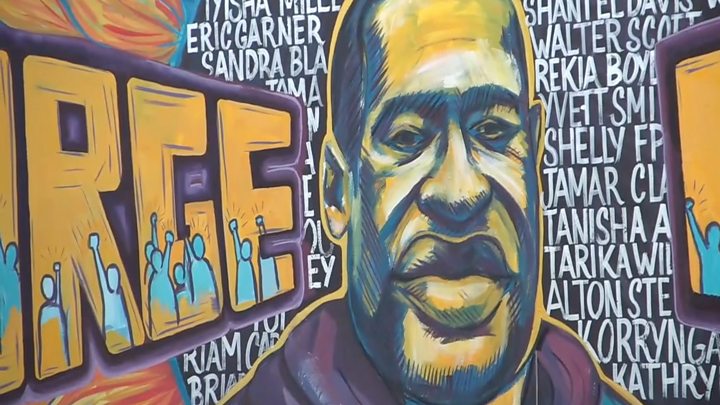
Media playback is unsupported on your device
Seattle's mayor banned the use by police of CS gas against protesters, and a federal judge in Denver ordered police to stop the use of tear gas, plastic bullets and other non-lethal force.
Meanwhile, the National Football League reversed its policy on protests against racial injustice by players during the national anthem.



 Africana55 Radio
Africana55 Radio 